If you're a matcha fan, you won't want to miss out on this delicious vanilla matcha latte recipe! With just a few simple ingredients and some basic kitchen equipment, you can whip up a creamy and flavorful latte that rivals those from your favorite coffee shop.
This vanilla matcha latte is a delicious and nutritious drink to enjoy any time of day and you can easily make it at home.
Jump to:
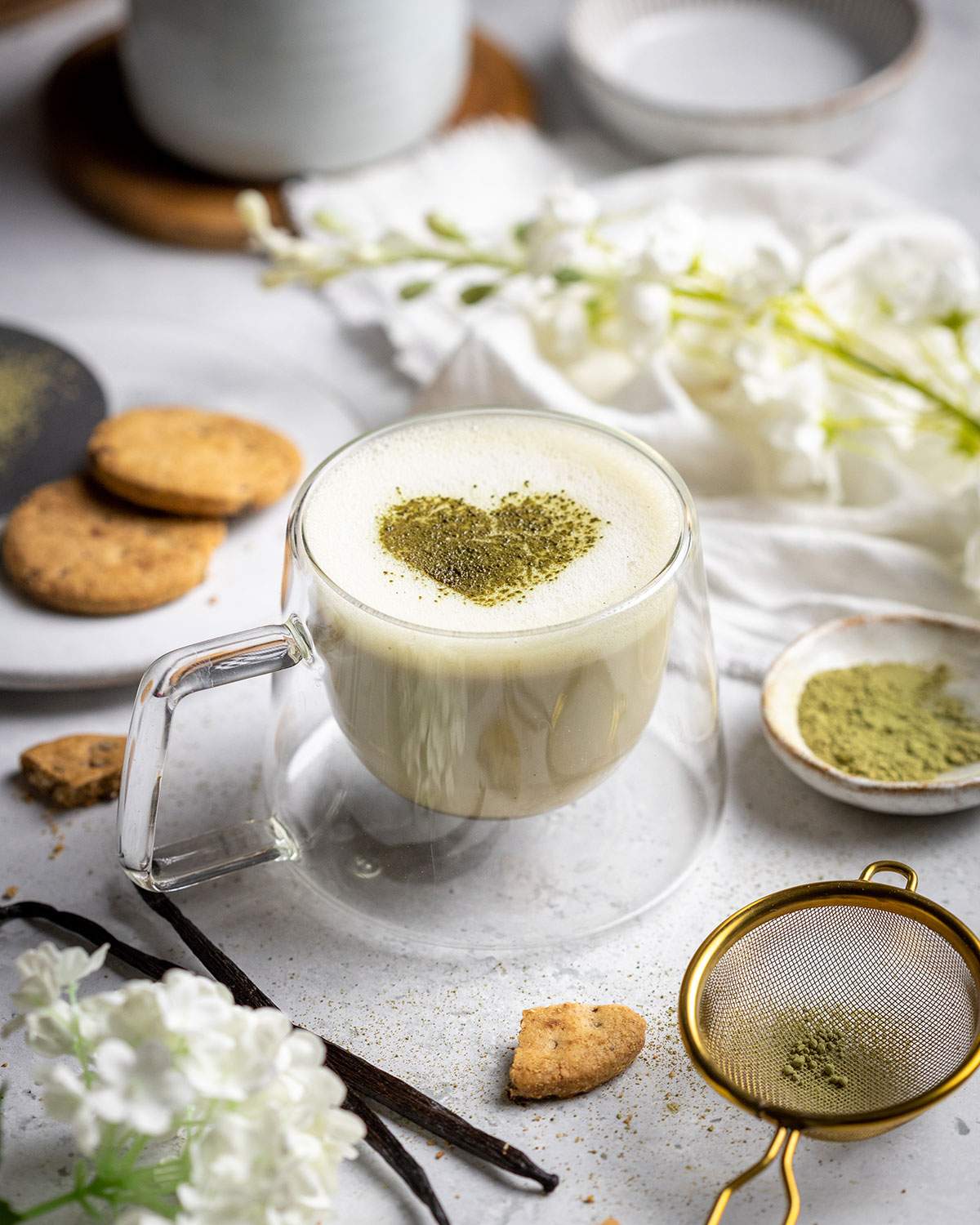
🗒️ Ingredients & Notes
Here's everything you need for this recipe:
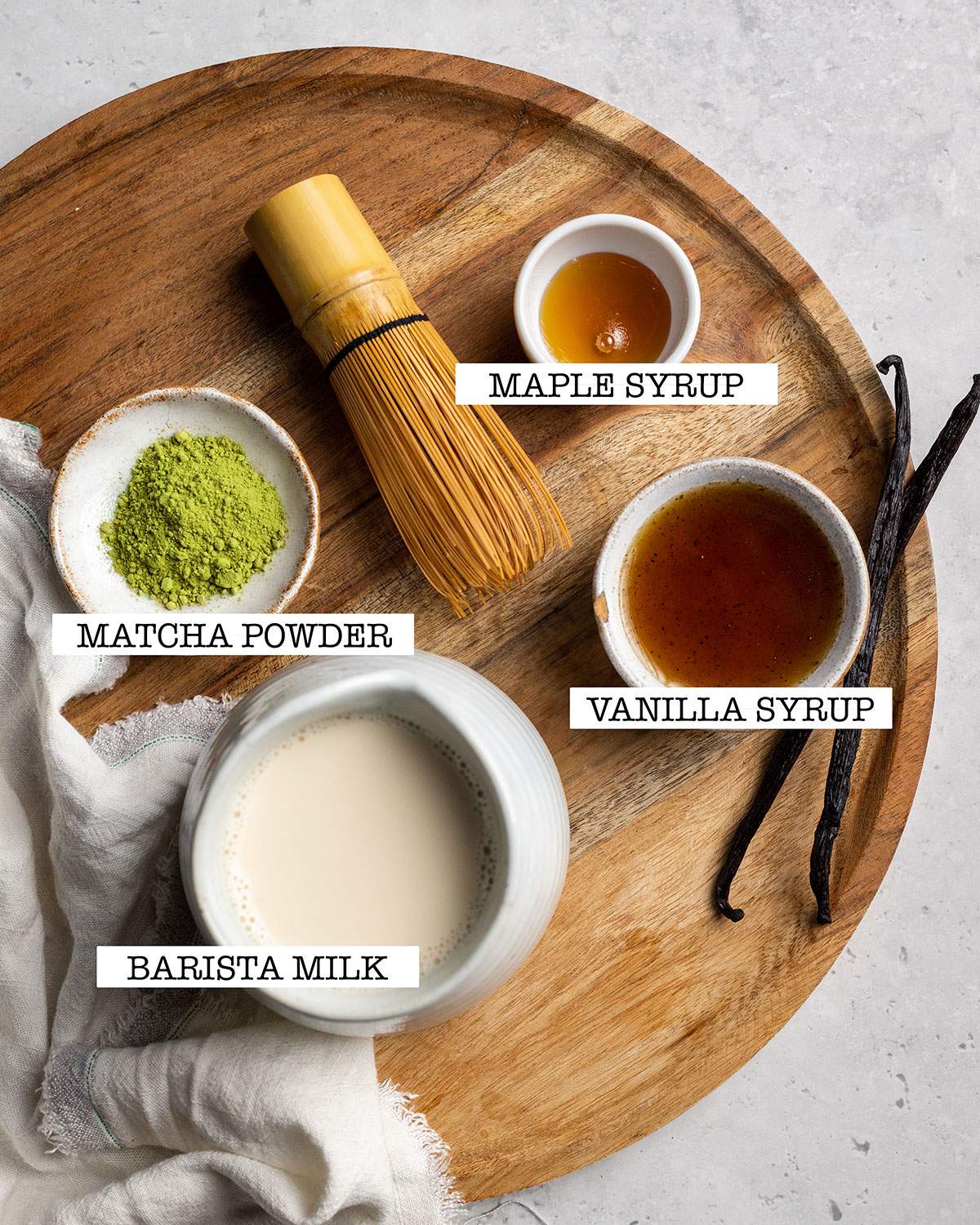
- Matcha powder - The star of the show! Go for high-quality ceremonial grade if you want a bold, smooth flavour and vibrant green colour.
- Hot water - Helps dissolve the matcha into a smooth paste. Use water between 70–80°C to avoid bitterness.
- Milk of choice - Oat milk is a fave for its creaminess, but almond, soy, or coconut also work well.
- Vanilla syrup or vanilla bean paste - Adds that sweet, cosy twist. Vanilla bean paste = more natural flavour. Avoid using artificial vanilla extract as it may not provide the same depth of flavor.
- Maple syrup or agave (optional) - Sweeten to taste depending on your milk or mood.
See recipe card at the bottom of the post for quantities.
💡 How to Tell if Matcha Powder has Gone Bad
Matcha can go bad if not stored properly. If it looks dull, yellowish, or smells stale or musty, it’s likely expired. Fresh matcha should be vibrant green with a grassy aroma. Store it in an airtight container in a cool, dry spot to keep it fresh.
🥄 Equipment
Here's everything you need for this recipe:
- Small whisk or traditional matcha whisk
- Small bowl
- Small saucepan
- Milk frother or hand frother
- Cup for serving
📖 Instructions (Step-by-Step)
You can easily make vanilla matcha latte at home with a fews simple steps:
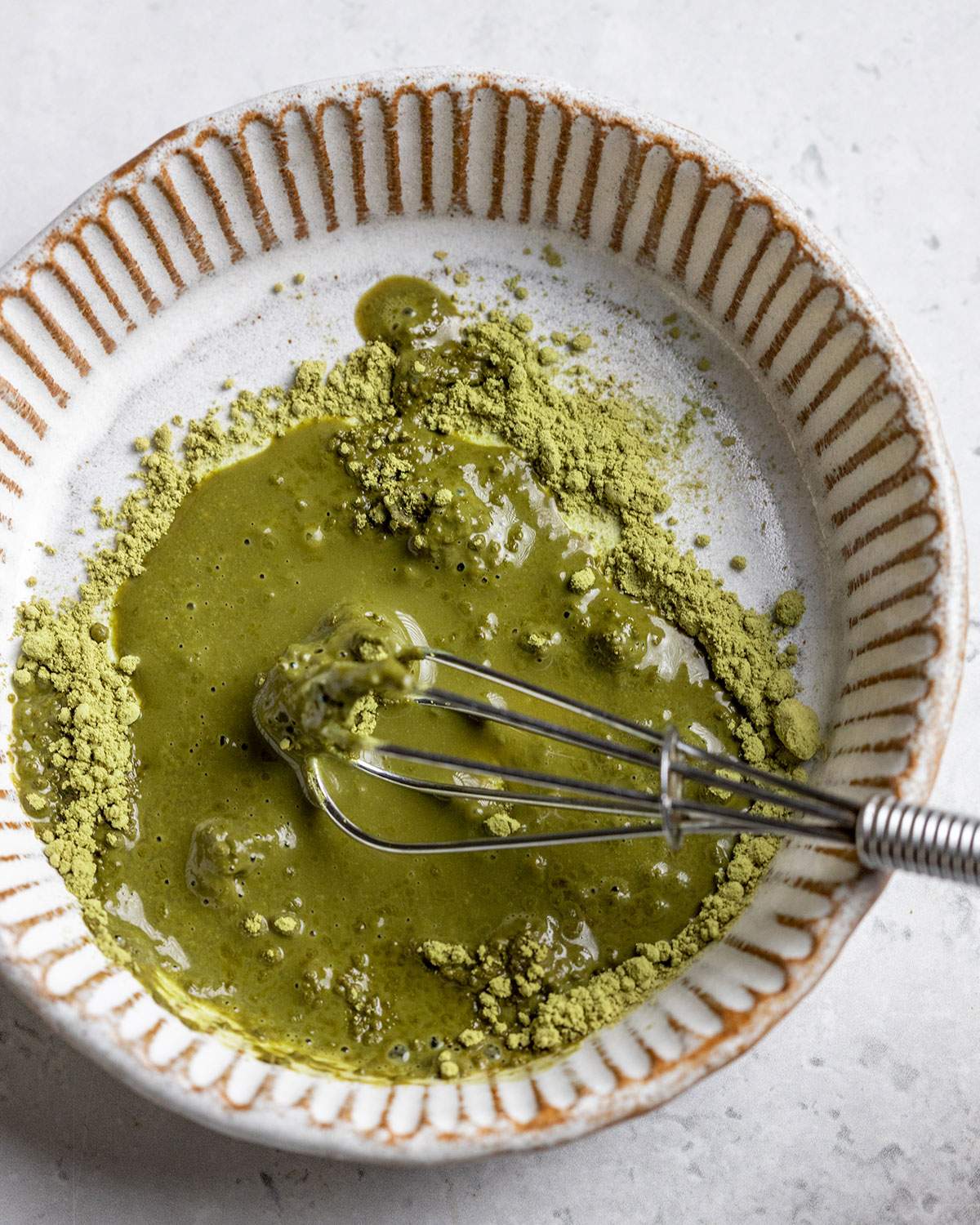
Step 1 - Whisk 1 teaspoon matcha powder with 2 tablespoon hot water (70–80°C) until smooth and lump-free.
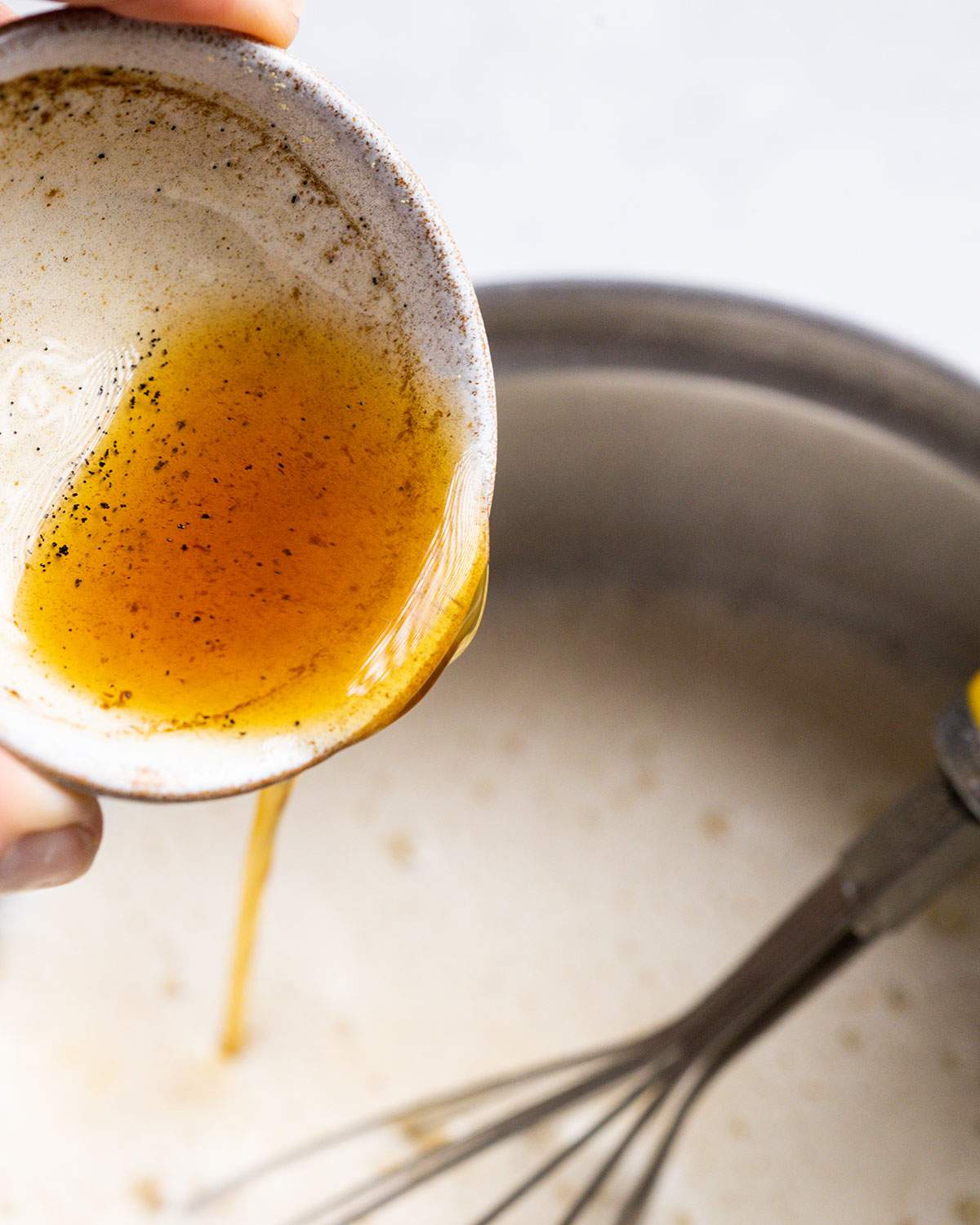
Step 2 - Heat your milk of choice with the vanilla (and maple/agave, if using) until hot but not boiling.
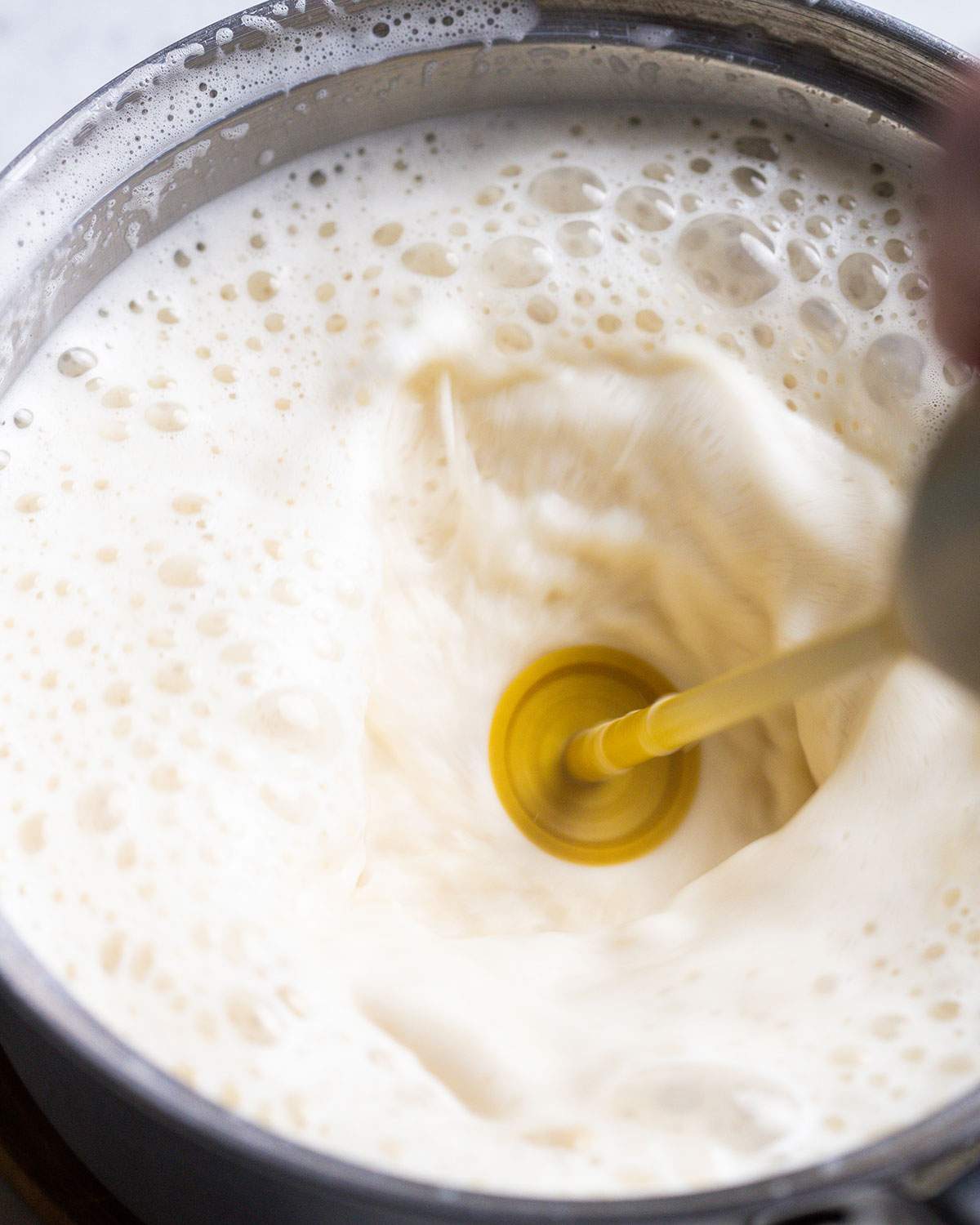
Step 3 - Froth the milk using a whisk, electric frother, or handheld frother until creamy with a nice foam layer.
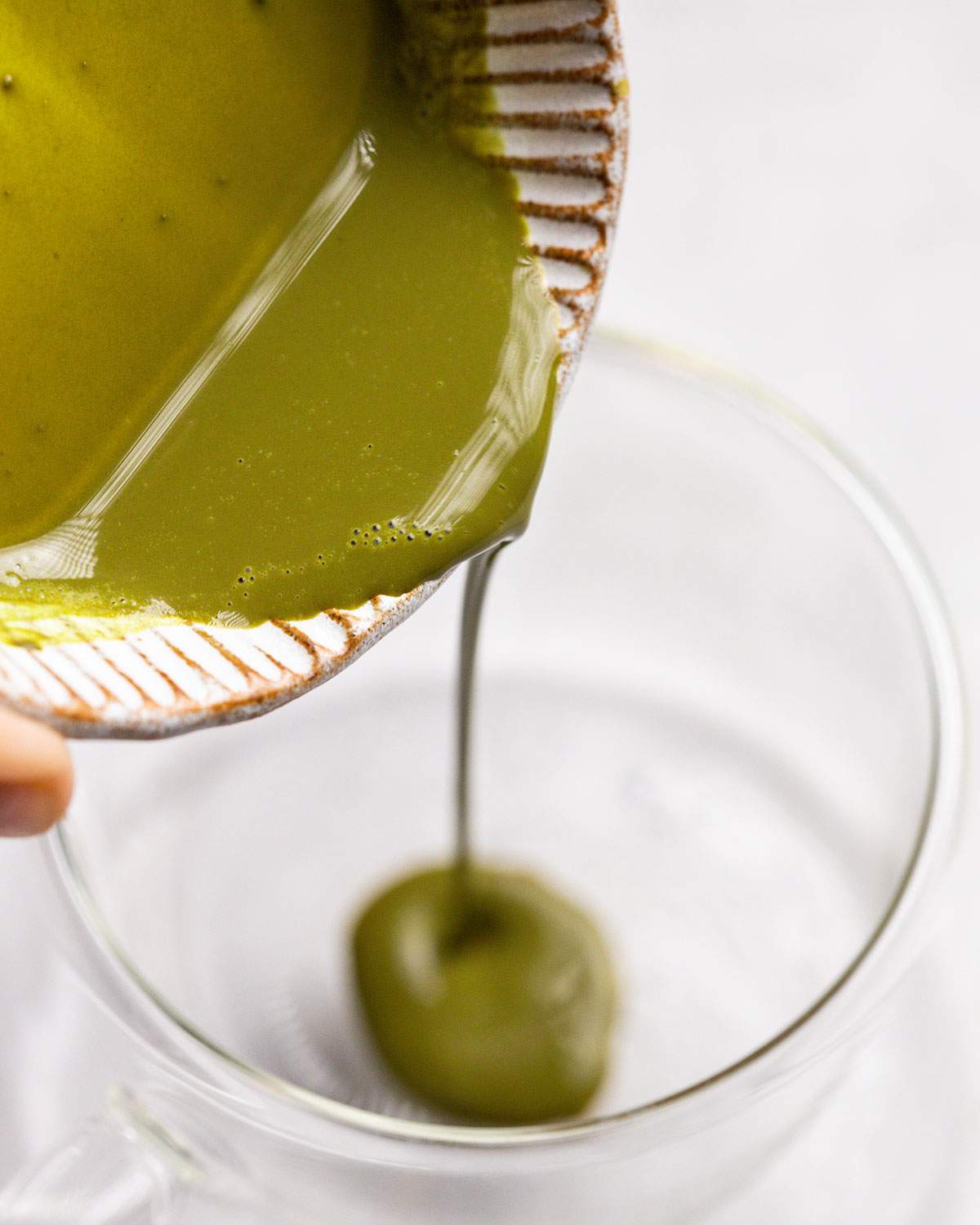
Step 4 - Pour the matcha into your mug.
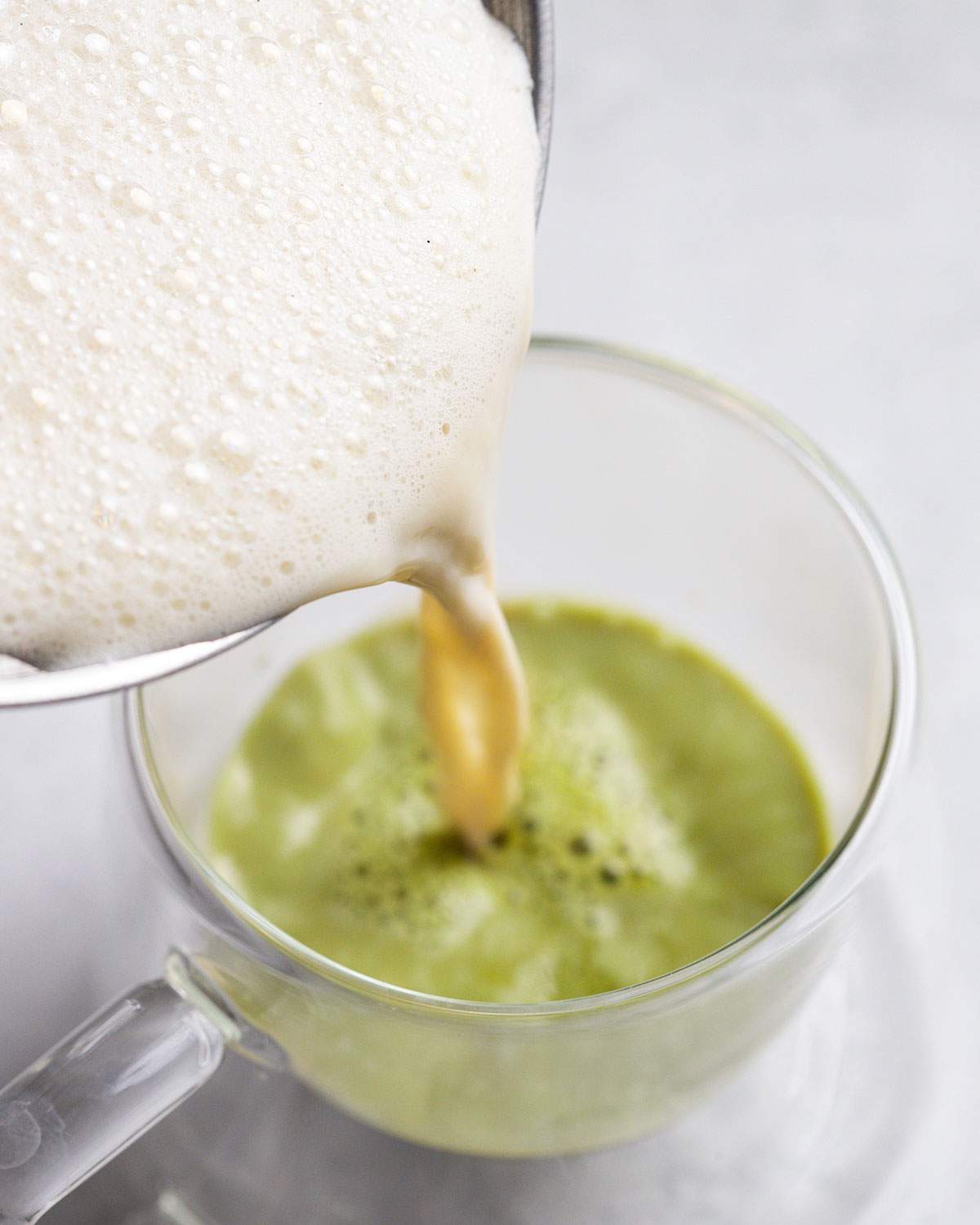
Step 5 - Top with the frothed milk.
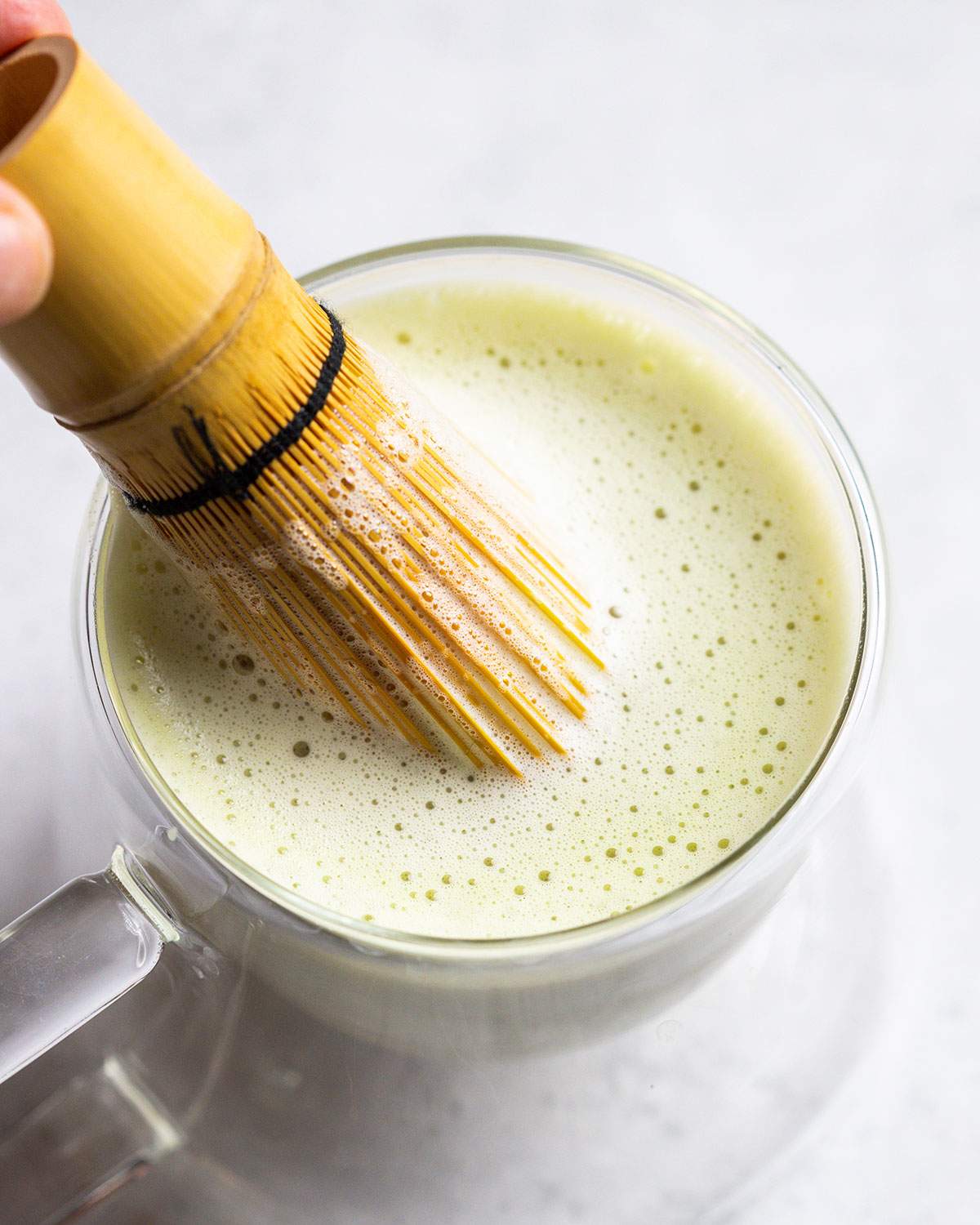
Step 6 - Use a small whisk or traditional matcha whisk to stir gently.
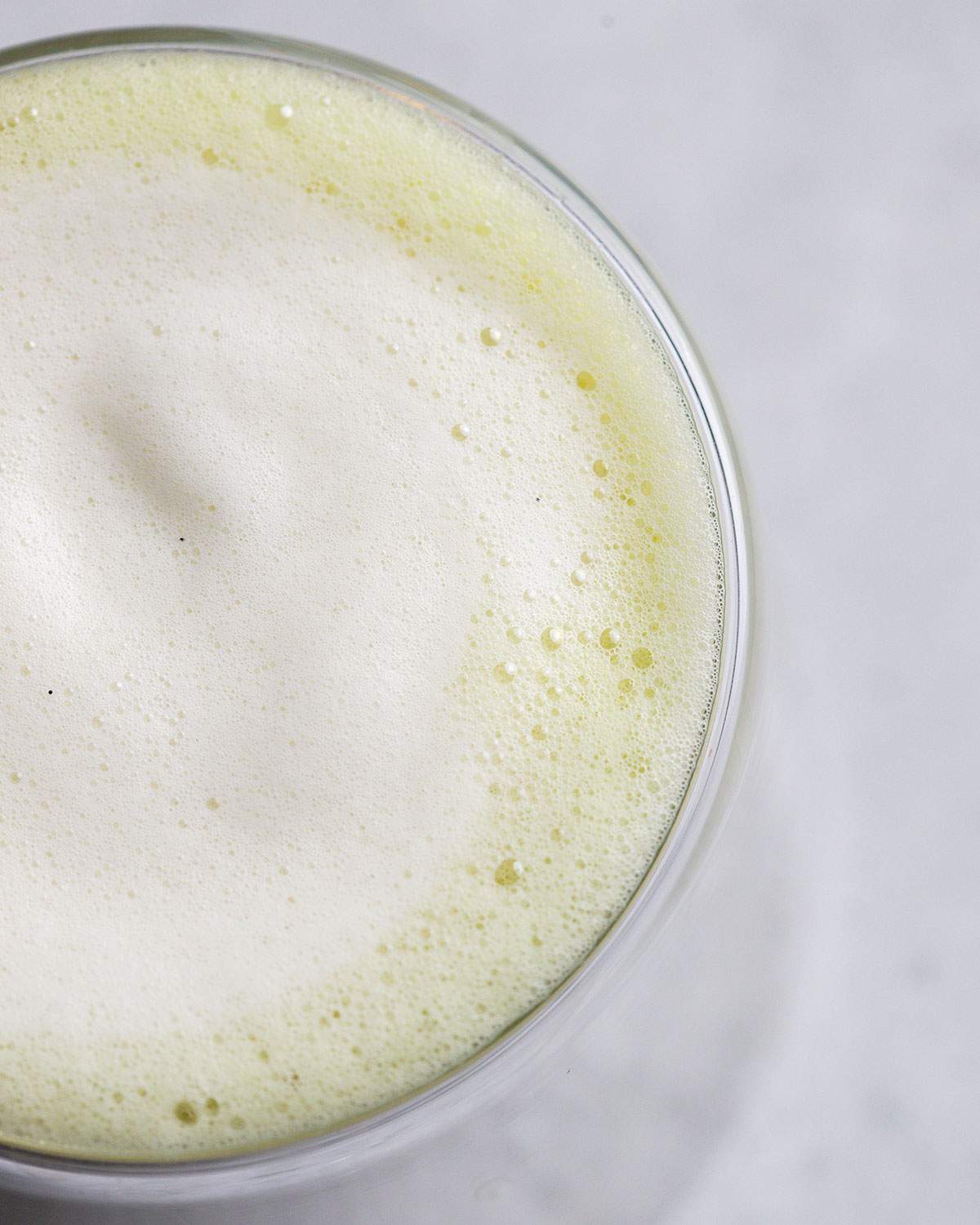
Step 7 - Add any extra foam on top.
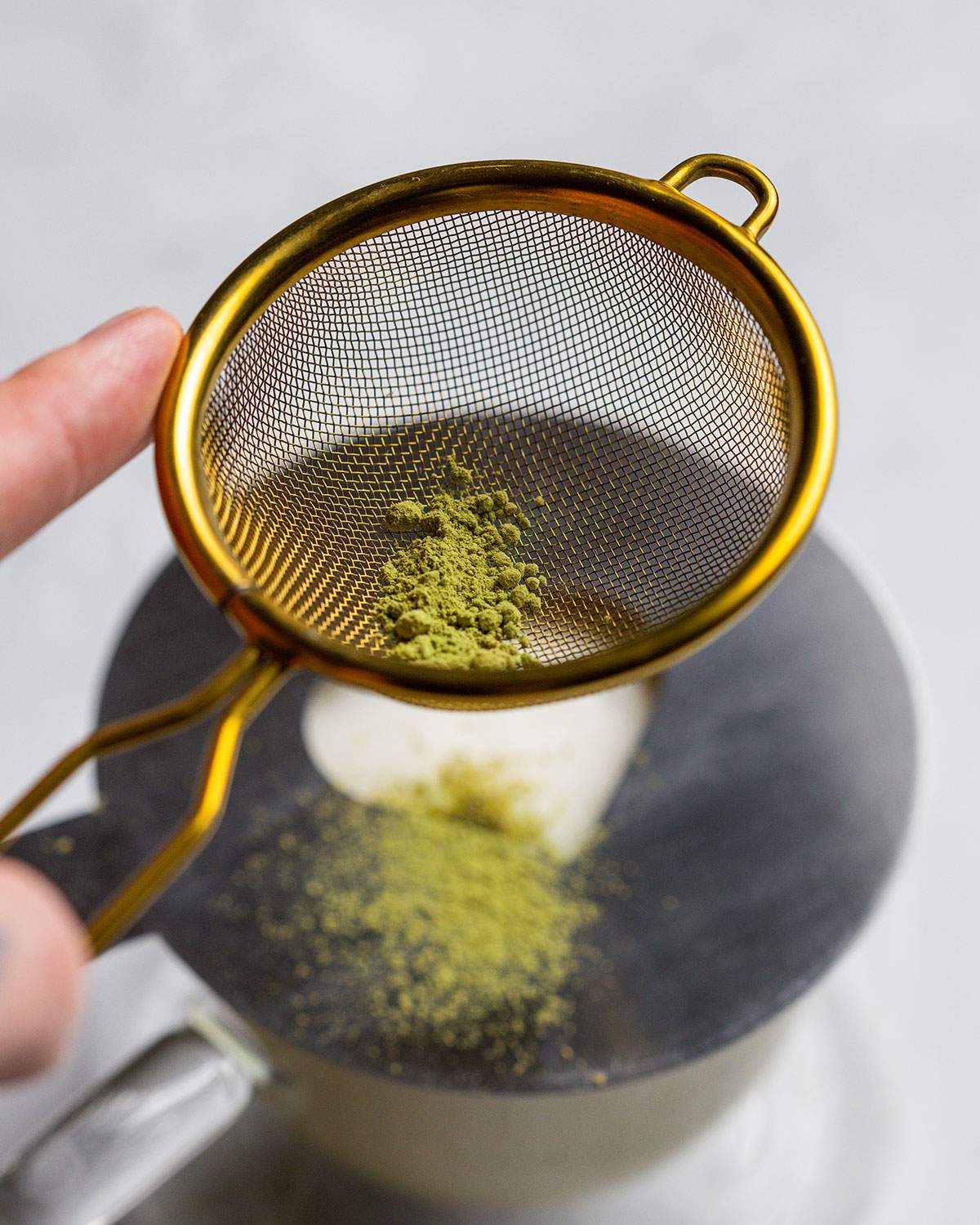
Step 8 - Decorate if you’re feeling fancy!
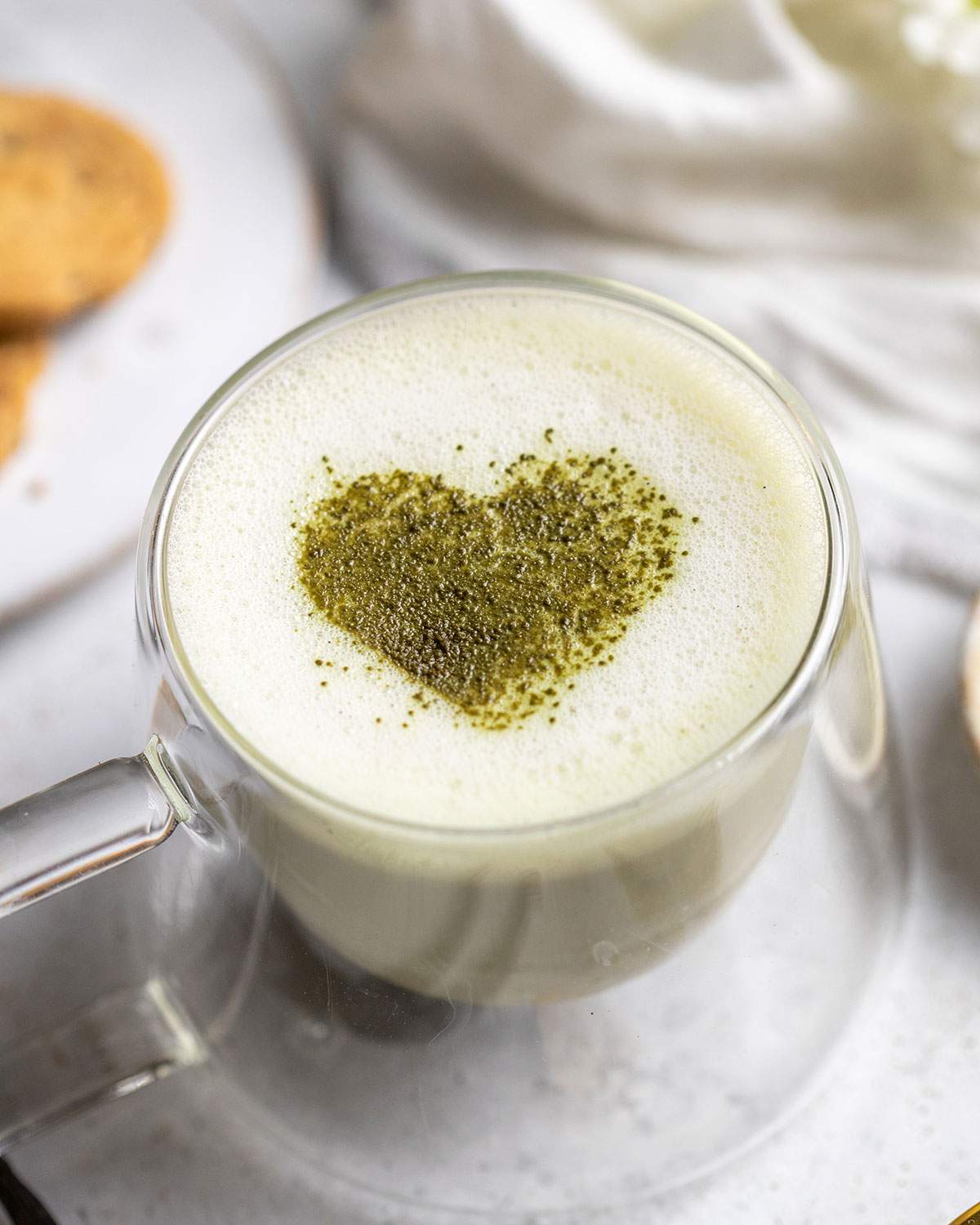
📌 If you love Pinterest you can pin any of the images to your boards!
🍵 Serving Tips
Serve your matcha latte hot or iced, depending on the season (or your mood!).
For a cozy vibe, pour the freshly frothed latte into a mug and top with an extra sprinkle of matcha or a touch of cinnamon. For an iced version, pour the matcha over ice and add cold frothed milk for a refreshing twist.
This drink pairs beautifully with breakfast pastries, cookies or a mid-afternoon snack. It’s perfect for slow mornings, post-lunch pick-me-ups or anytime you want something creamy and comforting with a gentle caffeine boost.
📦 How to Store
Your matcha latte is best enjoyed fresh, but if you’ve got leftovers, pop it in the fridge (airtight container) for up to 24 hours. Give it a good shake or stir before reheating. Avoid freezing - the texture won’t survive it.
💡 Expert Tips
Best Water Temperature for Matcha
To avoid bitterness, never use boiling water. The ideal temperature is 160°F to 180°F (70°C to 80°C). Use a thermometer or temperature-controlled kettle for best results. This helps preserve matcha’s natural flavor and nutrients.
How to Froth Milk for Matcha Latte
Frothing your milk gives your matcha latte its creamy texture and café-style finish. You can use a bamboo whisk (chasen), handheld frother, electric frother or even a blender.
With a Bamboo Whisk:
Pour hot milk into a container, keeping some foam in the pan. Add matcha paste to your cup, then pour in the milk. Whisk in a zigzag motion, scraping the bottom to combine. Rub the whisk between your palms to create foam, then stir it into the latte.
With a Frother:
Heat milk until hot (not boiling). Froth until thick and creamy. Pour matcha paste into a cup, add the milk while holding back the foam, then spoon it on top. Stir to combine.

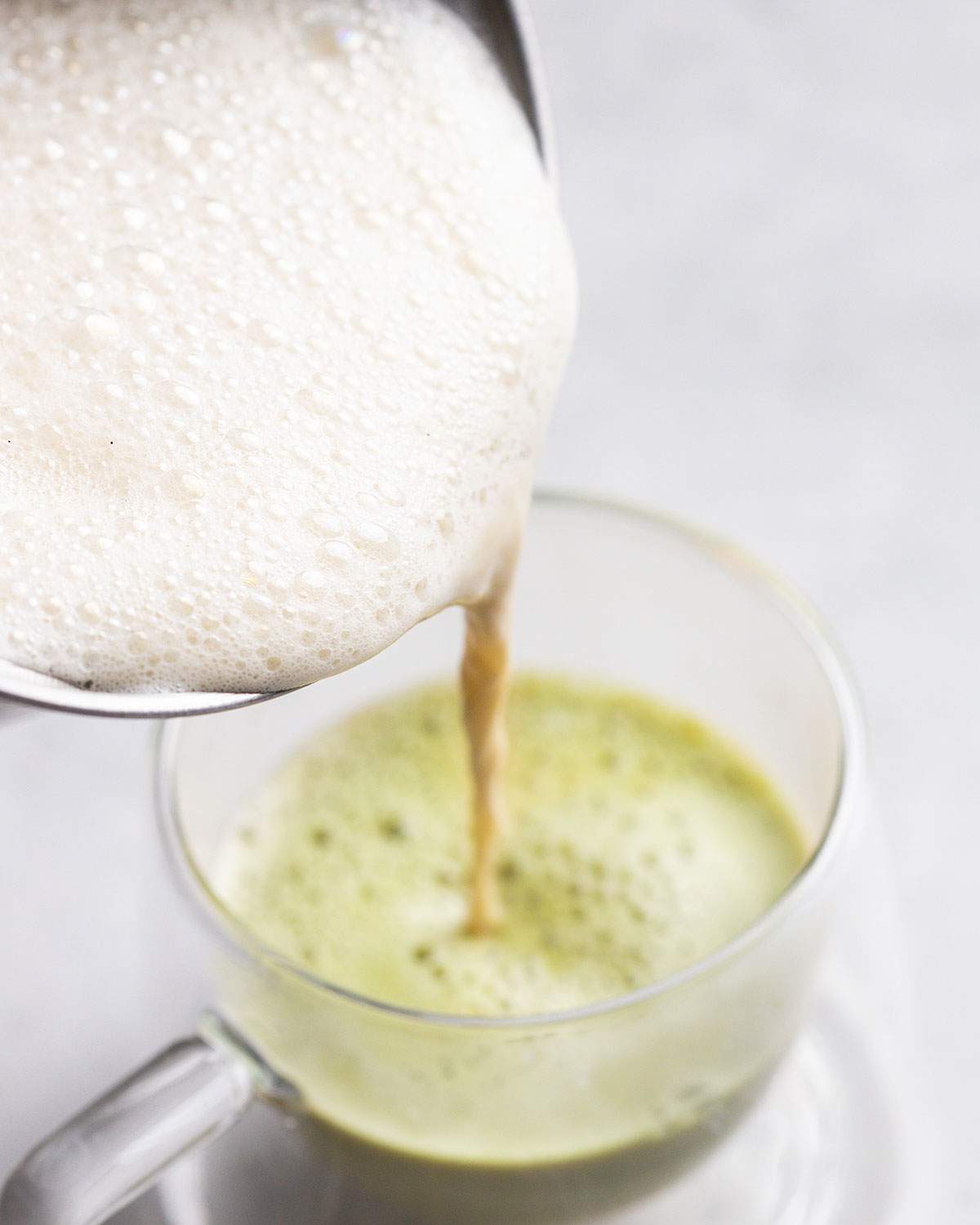
With a Blender:
No whisk or frother? Blend it! Combine the ingredients in a blender and blend on high for 30–60 seconds until smooth and frothy. Pour into a cup and enjoy. The foam may be lighter than other methods, but it still works.
❓ Frequently Asked Questions
Matcha is a finely ground green tea powder made from specially grown and processed tea leaves. It's known for its vibrant color, earthy flavor and energizing properties.
You can find matcha powder online (Amazon, speciality tea shops), at health food stores, or in the tea aisle of larger supermarkets. For the best flavor, look for ceremonial grade matcha with a bright green color and no added sweeteners.
Any milk works! Oat, almond, or soy milk all pair well with matcha. Just choose one you enjoy and that froths well if you're after that café-style foam.
Use a good-quality matcha powder, add a touch of vanilla extract and sweeten with simple syrup or maple syrup to mimic the Starbucks flavour profile.
Bitter matcha usually means the water was too hot or the matcha is lower quality. Use water between 160–180°F (70–80°C) and choose a fresh, vibrant green powder.
Yes! Prepare the matcha paste with hot water as usual, then pour it over ice and cold milk. Give it a stir or shake and enjoy.
🌱 More Drinks Recipes
☕ Love this recipe? Try my Iced Vanilla Latte for a refreshing twist, or make your own Homemade Vanilla Syrup to level up all your drinks at home.
Did you make this recipe? If so, will you do me a huge favor and leave a review and rating & let me know how you liked this recipe? THANK YOU! ❤️
📖 Recipe Card
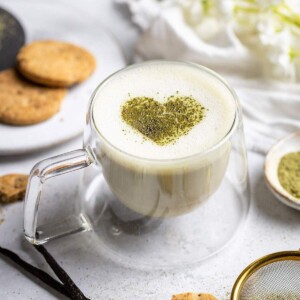
Vanilla Matcha Latte
Equipment
- 1 small whisk or traditional matcha whisk
- 1 small bowl
- 1 small saucepan
- 1 milk frother or hand frother
- 1 serving cup
Ingredients
- 1 teaspoon matcha powder
- 2 tablespoon hot water *not boiling!
- 1 cup plant milk (250 ml) e.g. oat milk, almond milk, cashew milk, soy milk or coconut milk
- 1 tablespoon vanilla syrup
- 1 teaspoon maple syrup optional
Instructions
- In a small bowl, add 1 teaspoon of matcha powder. Pour in 2 tablespoons of hot water (between 160°F and 180°F) and whisk using a bamboo whisk or small metal whisk. Whisk vigorously in an "M" or "W" motion until the matcha is fully dissolved and forms a smooth paste with no lumps.
- In a small saucepan, heat your milk (1 cup) over medium heat. Stir occasionally to prevent burning. Heat the milk until it’s hot, but not boiling - around 170°F is ideal. If you prefer extra froth, you can also use a milk frother to heat and froth your milk at the same time.
- Once the milk is heated, use a frother to froth it until a thick, creamy foam forms on top. If you don’t have a frother, you can also vigorously whisk the milk in the saucepan to create foam.
- Pour the matcha paste into a mug. Slowly pour the frothed milk into the mug over the matcha paste, holding back the foam with a spoon. Once you’ve poured in all the milk, spoon the foam on top of the latte.
- Stir the matcha and milk together using a whisk or spoon until fully combined. Make sure to scrape the bottom of the mug to incorporate any remaining matcha paste.
- Your matcha latte is ready! Garnish with a dusting of matcha powder on top if desired, or enjoy it as is. Sip and savor!
Notes
- Vanilla Syrup: Instead of vanilla syrup you can also use vanilla bean paste and balance the sweetness of the drink by adding more maple syrup.
- Water Temperature: Use water between 160°F and 180°F (70°C - 80°C) for the best flavor. Too hot or too cold water can affect the taste and texture of the matcha.
- Milk Options: Feel free to use any milk of your choice - almond, oat, or soy. For a creamier texture, opt for full-fat or barista blend milk. Heat the milk slowly and do not let it boil to avoid scalding the milk and changing the flavor of the latte.
- Sweetener: Adjust the sweetness to your taste! Maple syrup or agave, or a touch of honey are perfect additions. You can also skip sweeteners altogether for a more authentic, earthy flavor.
- Matcha Quality: Fresh, high-quality matcha powder makes all the difference in flavor. Look for a vibrant green powder with a smooth, fresh aroma.
© 2025 Romy London / Romina Callwitz | All images, videos, wordings and content are copyright protected and belong to Romina Callwitz. Please do not use any of my content without prior permission. If you wish to re-publish any (part of my) content, please get in touch via email. Thanks for your support!
*Disclosure: This page may contain affiliate links and sponsored links that earn me a small commission, at no additional cost to you. You can find more information in my Privacy Policy.


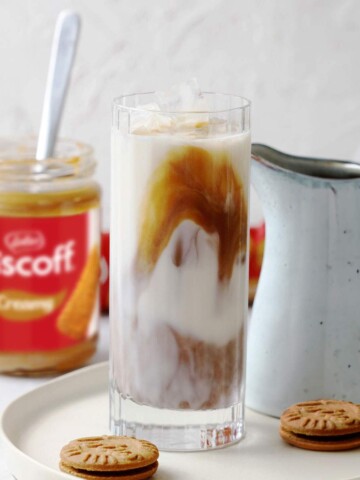
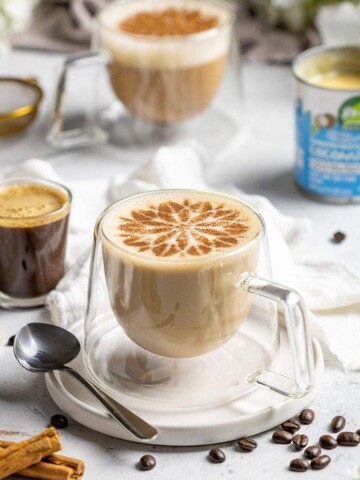
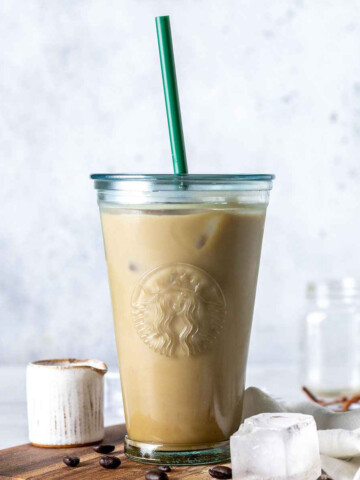
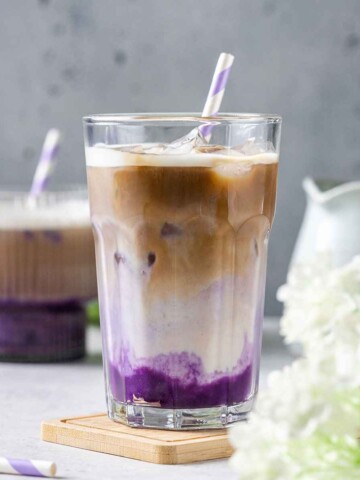
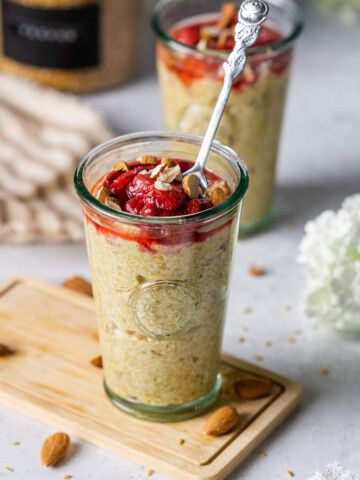
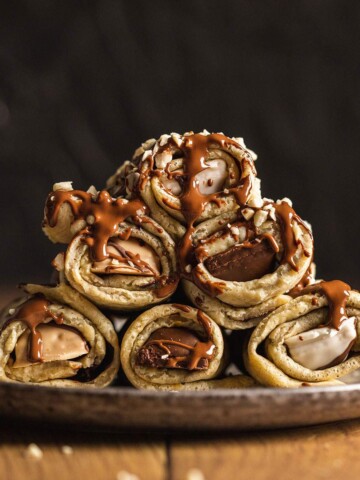
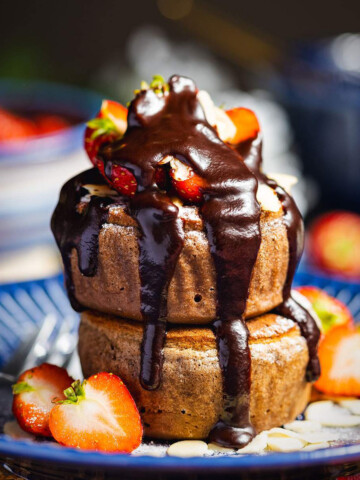
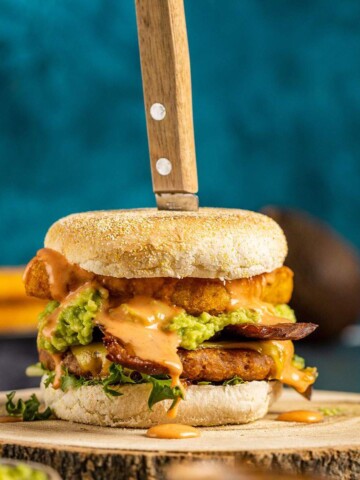
Amy E
This is my favourite way to make matcha! 😍